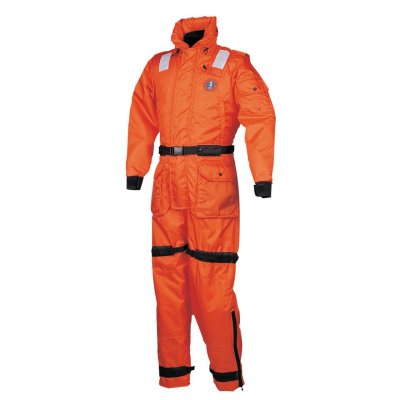At least two posts up thread about having to wait for the boat to sink to automatically open the hydrostatic release. I have yet to see / use a hydrostatic release that didn't have a manual quick release. The ones I'm familiar with are easier to use than the release on a ratchet strap. If you purchased a hydrostatic release without a quick release it is simple to rig one. The raft is held in the cradle by a strap, fixed on one side, hydrostatic release on the other side. Put a quick release in the strap at a convenient point.
The purpose of the hydrostatic release is to free the raft in the event that the boat sinks out from under you faster than you can manually release and deploy the raft. The proper protocol is to make the emergency call, get everyone ready, launch the raft, pull on the painter to inflate it and get ready to board the raft. Stay with the big boat until you are forced to leave.
If you are going to purchase a raft get some training. And practice. The misunderstanding about hydrostatic releases is a good example of why training is needed to correctly use survival gear.
There was a suggestion above to visit the servicer at re-pack time to see the raft inflated. Get in. Familiarize yourself with where everything is. Envision yourself getting into the raft from the water should you have to, it's not easy.
I'll relate a personal story. I sailed professionally for decades. I was usually one of the competent, strong ones who aided the others in training and drills. Then about the time I turned 60 I got some new crew, very green, not much training. We sent them to Basic Safety Training at a school that deploys the training raft in cold water. The engineer and I decided to go as well though we weren't required to. We all don our immersion suits, jump in, swim to an overturned raft and board the raft. While I used to be the one who helped get the smaller, weaker persons aboard this time I needed the help. Upper body strength just isn't what is used to be. Many of here on TF are getting older and not as strong as we once thought we were. It was a real eye opener.
Life raft, inflatable dingy. No matter your choice. Deploy it early in an emergency. It's much easier to step in from the big boat.
The same goes for immersion suits. Yes, it's possible to put one on in the water. I've done it, in a warm swimming pool. I can't imagine doing it at night, in rough water, in cold water.

